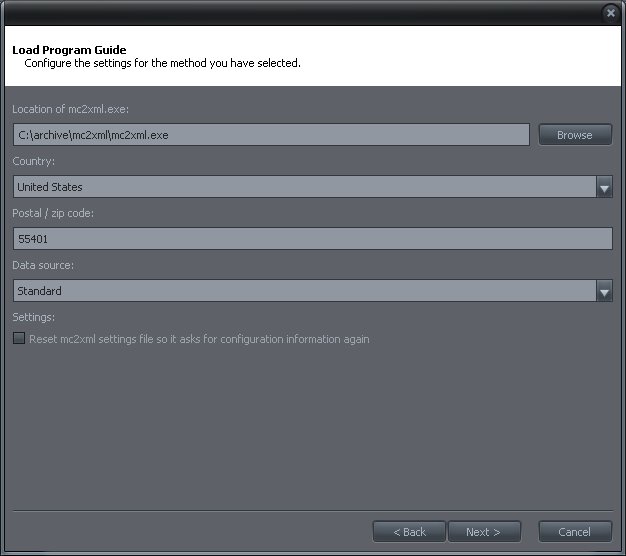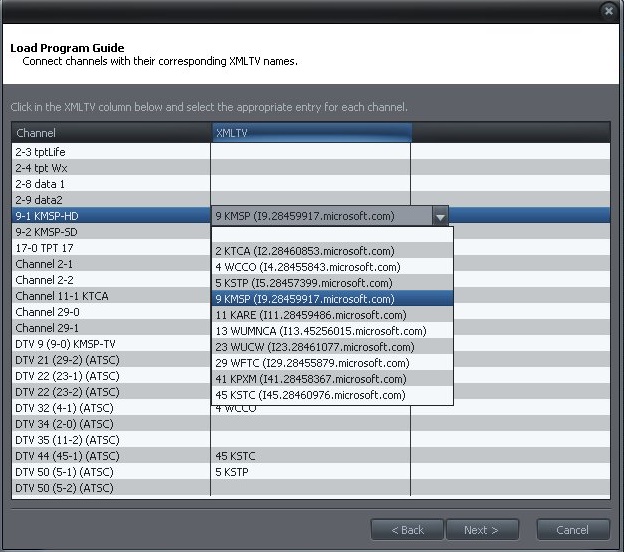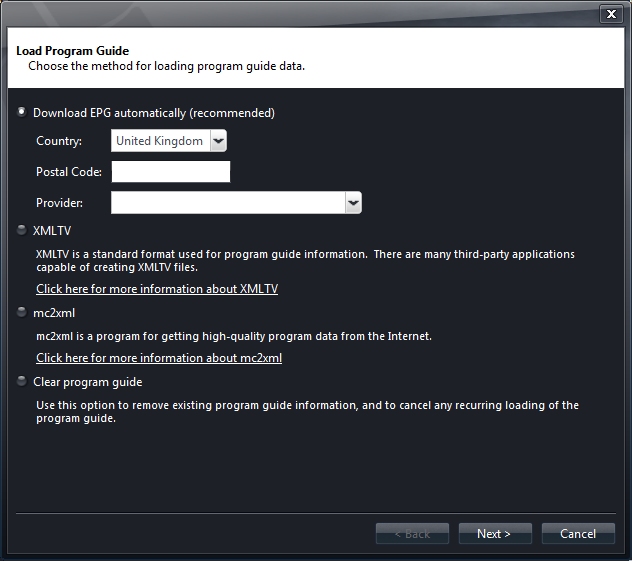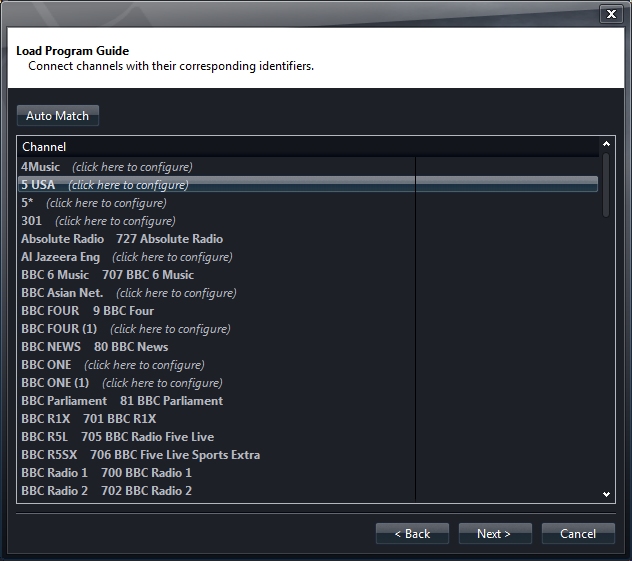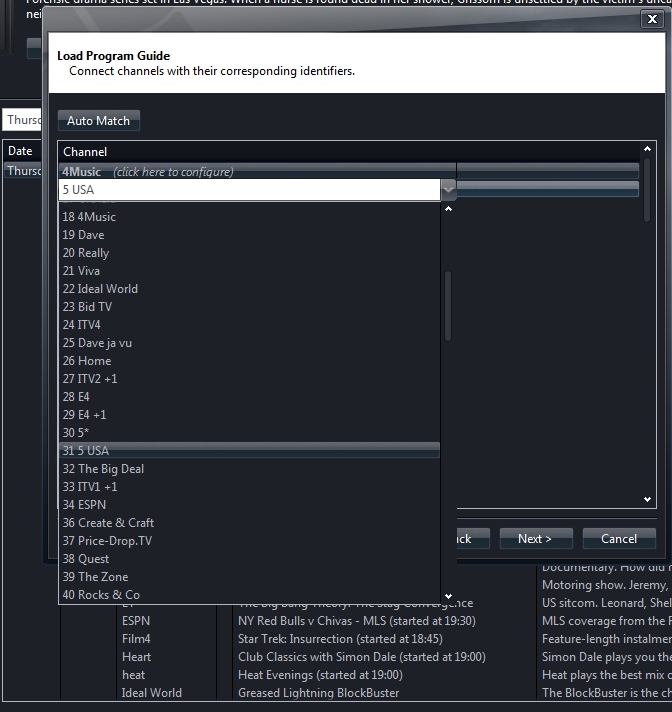EPG: Difference between revisions
No edit summary |
No edit summary |
||
| Line 60: | Line 60: | ||
The standard guide feature provides only one way of selecting channels using the Favorites marking in the "Edit Channel List" option. A number of users felt some more flexibility was required to have multiple Guide listings with particular types of channels such as Radio and TV or Sports or Kids. In order to achieve this, a new field was added and some work is required by the user. Don't be put off! Taken step by step this is achievable by any user and the results are well worth the effort. |
The standard guide feature provides only one way of selecting channels using the Favorites marking in the "Edit Channel List" option. A number of users felt some more flexibility was required to have multiple Guide listings with particular types of channels such as Radio and TV or Sports or Kids. In order to achieve this, a new field was added and some work is required by the user. Don't be put off! Taken step by step this is achievable by any user and the results are well worth the effort. |
||
Channels are simply database records, just like audio and video files. This means it's possible to tag them like anything else. The idea is to tag channels with keywords. You can give any channel any number of keywords. Imagine tagging your favorite channels with 'Favorites', music channels with 'Music', and your kids' channels with 'Kids'. |
|||
Then, you could configure the television guide to show only entries for a particular keyword. So on the top roller inside Guide in Theater View, you could have 'All', 'Favorites', 'Music', 'Kids', etc. |
|||
If you play from one of those views, only the channels in the view will be in the channel up / channel down queue. In other words, if you play from the 'Favorites' list, channel up and channel down will only loop your favorite channels. |
|||
So, to set this up, follow these steps: |
|||
1. Create a Smartlist of the scanned TV Channels. If you haven't done this yet, go to the instructions here. |
|||
To be continued. |
To be continued. |
||
Revision as of 21:38, 24 May 2012
An EPG (Electronic Program Guide) provides a schedule of shows for each TV channel. MC can read XMLTV data files. MC17 now provides a semi-automated way of creating and populating an EPG. This is partly based on mc2xml. It is no longer necessary to install this separately.
Pre MC17
For those of you with a version prior to MC17, these are the instructions for installing mc2xml:
You can add an EPG to J. River Media Center. Here are the steps:
2. Unpack it by running it. Save it anywhere, but remember the location.
3. In MC, under Drives & Devices > Television, choose Configure/Load Program Guide
4. Follow the on-screen instructions until you see this screen:
5. On that screen, enter the location of the mc2xml.exe file, your country, postal code, and choose "standard" for data source.
6. When you choose Next, the mc2xml file will get data from the Internet. After it finishes, you will see this screen:
7. This screen lets you choose an EPG channel for each channel in MC. One, at a time, click in the second column, next to the channel you wish to change.
Once you've finished this, you should see the schedule for each channel.
MC17 EPG
For those of you with MC17, there is now a semi-automated process.
Basic Guide Set-up
1. In the left pane in Standard View, select Drives & Devices > Television
2. Select "TV Options" at the bottom left of the main pane. Select "Load Program Guide".
3. Select the default option - "Download EPG automatically (recommended)" and select your Country, Postal Code and the Provider of the EPG data. The Provider needs to be chosen depending on the type of tuner you are using. The options offered will have been selected based on your location. Now click "Next".
4. The Load Program Guide channel matching window will pop up. The purpose of this step is to match the channels you have found during the scan to the channel names used in the guide data. Some names will match automatically. If you see "(click here to configure") against a Channel name, a match was not found. This may be because the names differ slightly or there is no guide data available for this channel from the Provider.
5. Near the top of the window is an Auto Match button. At the time of writing, it is unclear whether it is necessary to click this button. If you do, you will be asked: "If an identifier is already associated with a channel, do you want to keep the existing identifier or use the newly matched identifier?" Imagine you had set up the guide but had a number of channels where no guide data was found. If you run the process again with a different Provider, you might find the data available. In order that you don't change the associations you already have, choose "Keep Existing". If this is the first time you have run the process, choose "Use New".
6. For each channel where it says "(click to configure)", click on that text and search down the list which pops up and select a channel name which you believe ties up with the scanned channel.
When you have completed this for each missing match, click "Next".
7. Make sure that the check box next to the "Automatically load" option is checked. This will ensure that your EPG is kept up to date. Click "Finish".
You will now see the EPG load then the guide data will show in the pane against the channels.
Now that the EPG is set up, your TV channels will show in Theater View under Video > Guide.
Advanced Guide Set-up
The standard guide feature provides only one way of selecting channels using the Favorites marking in the "Edit Channel List" option. A number of users felt some more flexibility was required to have multiple Guide listings with particular types of channels such as Radio and TV or Sports or Kids. In order to achieve this, a new field was added and some work is required by the user. Don't be put off! Taken step by step this is achievable by any user and the results are well worth the effort.
Channels are simply database records, just like audio and video files. This means it's possible to tag them like anything else. The idea is to tag channels with keywords. You can give any channel any number of keywords. Imagine tagging your favorite channels with 'Favorites', music channels with 'Music', and your kids' channels with 'Kids'.
Then, you could configure the television guide to show only entries for a particular keyword. So on the top roller inside Guide in Theater View, you could have 'All', 'Favorites', 'Music', 'Kids', etc.
If you play from one of those views, only the channels in the view will be in the channel up / channel down queue. In other words, if you play from the 'Favorites' list, channel up and channel down will only loop your favorite channels.
So, to set this up, follow these steps:
1. Create a Smartlist of the scanned TV Channels. If you haven't done this yet, go to the instructions here.
To be continued.
More
Discussion about Australia on Interact.
